Introduction
As the time approaches to commission HPF on the Hobby-Eberly Telescope, we are learning that the spectrograph will be coming online in truly exciting times for exoplanet science! The detection of habitable-zone exoplanets around two nearby M dwarf stars—including around the Sun’s nearest stellar neighbor—puts the science case for HPF into stark relief. Let’s take a quick look at these systems, and discuss where HPF fits into the picture.
TRAPPIST-1: little star, big deal!
TRAPPIST is a robotic 60-centimeter telescope at La Silla Observatory in Chile. It is entirely dedicated to observations of transiting exoplanets and minor bodies in the solar system. One of the telescope’s first discoveries, announced in May, is TRAPPIST-1, a nearby M dwarf star with three transiting planets. Each of the three planets have radii similar to that of Earth, and orbit near the star’s habitable zone.
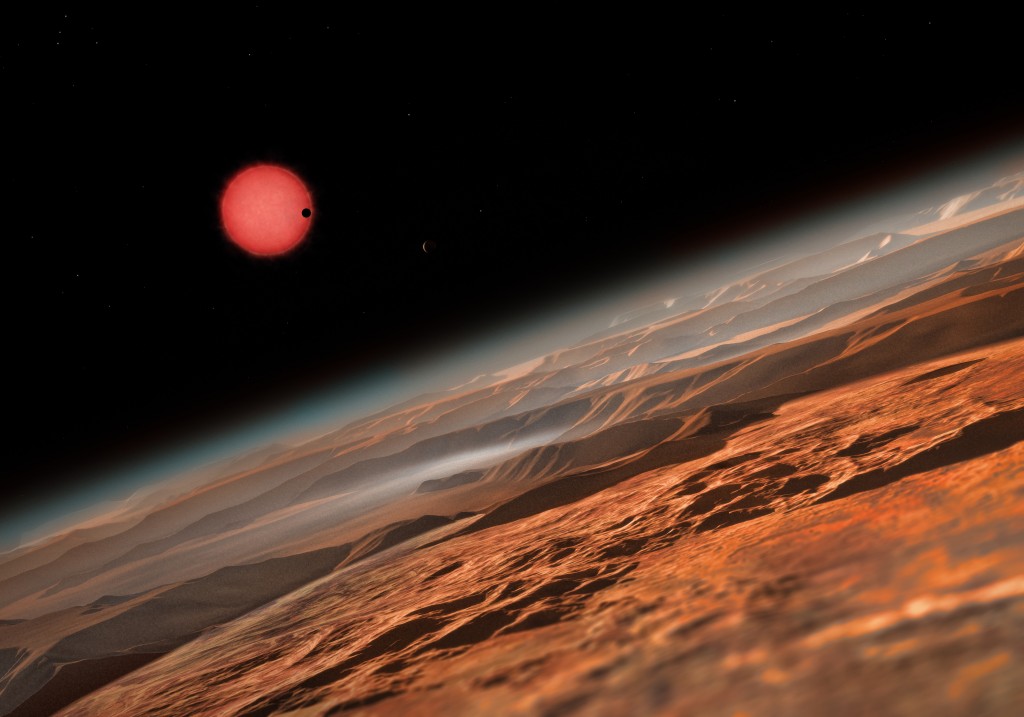
Artist’s impression of TRAPPIST-1 as seen from the outermost of its three transiting planets. Image credit: ESO/M. Kornmesser
While we now know of exoplanets orbiting thousands of stars, the TRAPPIST-1 system is remarkable because of just how small and cool the star is. TRAPPIST-1 is a member of a class of stars sometimes referred to as “ultracool dwarfs”. It has just 8 percent the mass of our Sun, and is only 5 ten-thousandths as luminous. For comparison, if TRAPPIST-1 were as bright as a 100-watt incandescent light bulb, the Sun would be about as bright as a whole set of floodlights used at an outdoor sports complex. TRAPPIST-1’s mass is near the minimum required to trigger hydrogen fusion in its core, making it just barely a star at all!
Ultracool dwarfs are so faint at visible wavelengths that they have almost never been targeted by exoplanet surveys. Kepler observed almost none of them during its primary mission, and they are similarly underrepresented in Doppler planet searches to date. Thus, the discovery of the TRAPPIST-1 planets is a real first. To find that ultracool dwarfs host systems of multiple small planets like their more massive stellar siblings is an exciting step forward for the science of exoplanets around low-mass stars.
Proxima Centauri b: the habitable-zone planet next door
Proxima Centauri (Proxima for short) is part of the triple-star Alpha Centauri system, and the closest star to the Sun. It is a small, distant companion to the binary stars Alpha Centauri A and B. At a distance of about 4 light-years from the Sun, the Alpha Centauri system is so close that some people are already discussing sending robotic probes there. From a more near-term perspective, stars as close as Proxima are prime targets for a huge number of astronomical instruments, including space-based telescopes such as the upcoming James Webb Space Telescope (JWST). Thus, the time is now to identify and characterize any exoplanets around the Alpha Centauri stars.
Proxima has long been a target of exoplanet surveys. HPF science team member Michael Endl was among the first astronomers to search for exoplanets around Proxima, observing it with the UVES spectrograph at the Very Large Telescope in Chile as far back as 2000. As a result, we have known for some time that any planets orbiting close to Proxima must be small, or we would have found them by now. This allowed for the tantalizing possibility that a small, terrestrial planet might reside in the star’s habitable zone.
It appears that this possibility has now proven to be a reality. In January, a group of astronomers launched the Pale Red Dot program, a campaign to observe Proxima intensively with the HARPS spectrograph with the goal of discovering any terrestrial planets that might reside within its habitable zone. The program also included near-simultaneous measurements of Proxima’s brightness as part of an effort to mitigate the effects of stellar magnetic activity, which we have discussed as a challenge for the discovery of low-mass exoplanets around M dwarf stars.
This week, the team announced they had in fact discovered a potentially Earthlike planet: Proxima b, which has a minimum mass just 27 percent greater than Earth’s and orbits in the very middle of the habitable zone. At a distance of just 5 percent the separation of the Earth from the Sun, the planet completes an orbit every 11.2 days. Proxima b has not yet been observed to transit its star, but it has not been ruled out, either.

Artist’s impression of the Alpha Centauri stellar system as viewed from the surface of the habitable-zone planet Proxima b. Image credit: ESO/M. Kornmesser
Proxima b represents one of the most significant exoplanet discoveries to date. Proxima Centauri is close enough to enable follow-up observations not feasible for many other stars. If the planet does transit, JWST could potentially characterize its atmosphere. If not, it may still be possible to detect molecules in its atmosphere with upcoming 30-meter-class telescopes. Astronomers are a creative bunch, and it is likely that they will find ways to explore Proxima b that have not even been discussed yet!
How HPF fits in
It is important to keep in mind that the F in HPF stands for “Finder.” The primary objective of HPF is to discover new exoplanets around low-mass stars. However, the discovery of the TRAPPIST-1 system emphasizes another important role for HPF, which is to characterize planets that are found to transit nearby stars. Experiments searching for transiting exoplanets such as TRAPPIST, Kepler (now operating as K2), and TESS will find many systems like TRAPPIST-1 in the coming years. With its combination of near-infrared wavelength coverage and a large-diameter telescope, HPF is uniquely suited to provide Doppler follow-up on the coolest, dimmest nearby stars.
As for Proxima, the discovery of Proxima b reiterates the idea that there are many exciting worlds still waiting to be uncovered. Proxima is a benchmark for the type of star HPF will observe most frequently, an idea we will discuss in more detail on this blog shortly. The instrument is nearing completion, but the work is just beginning.



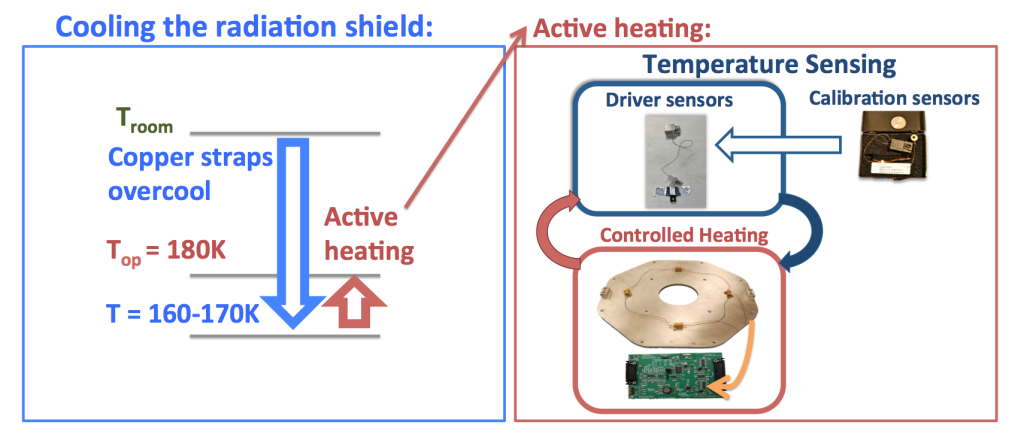
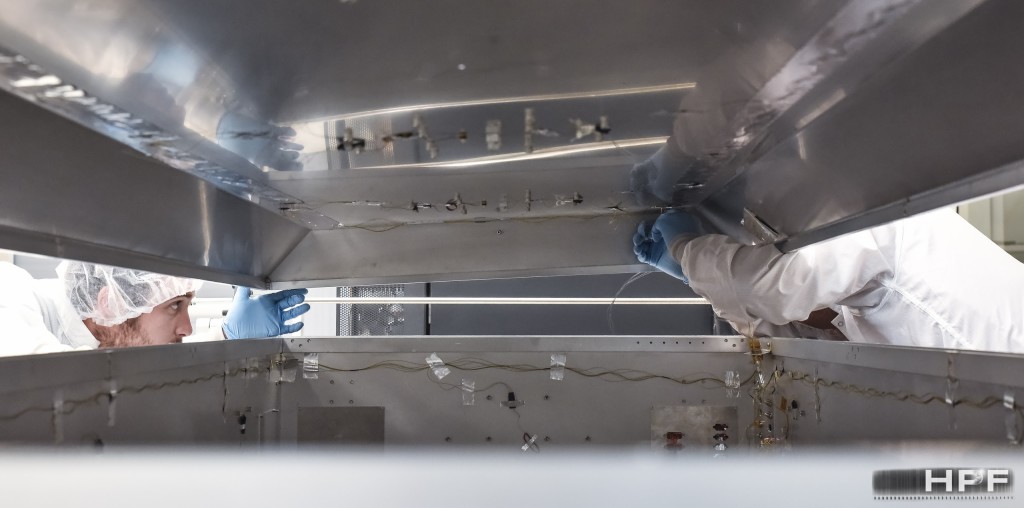
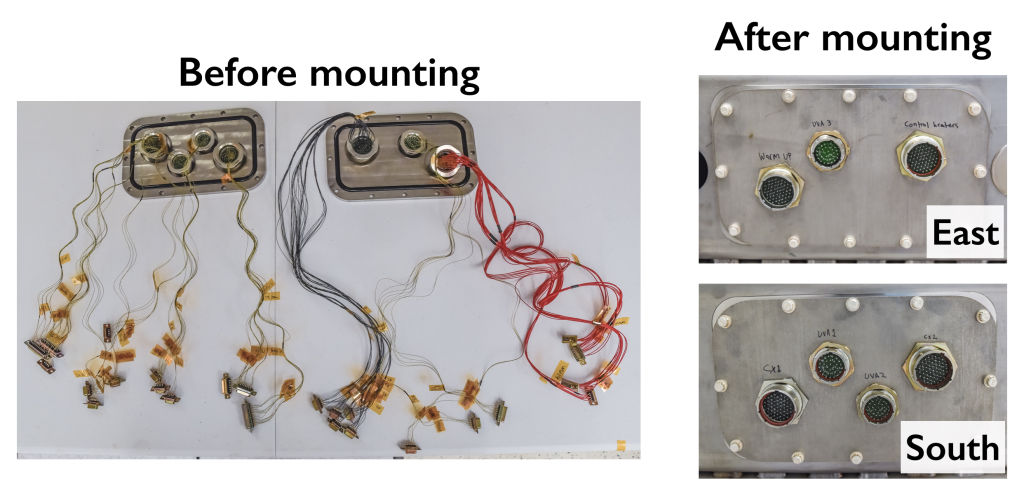
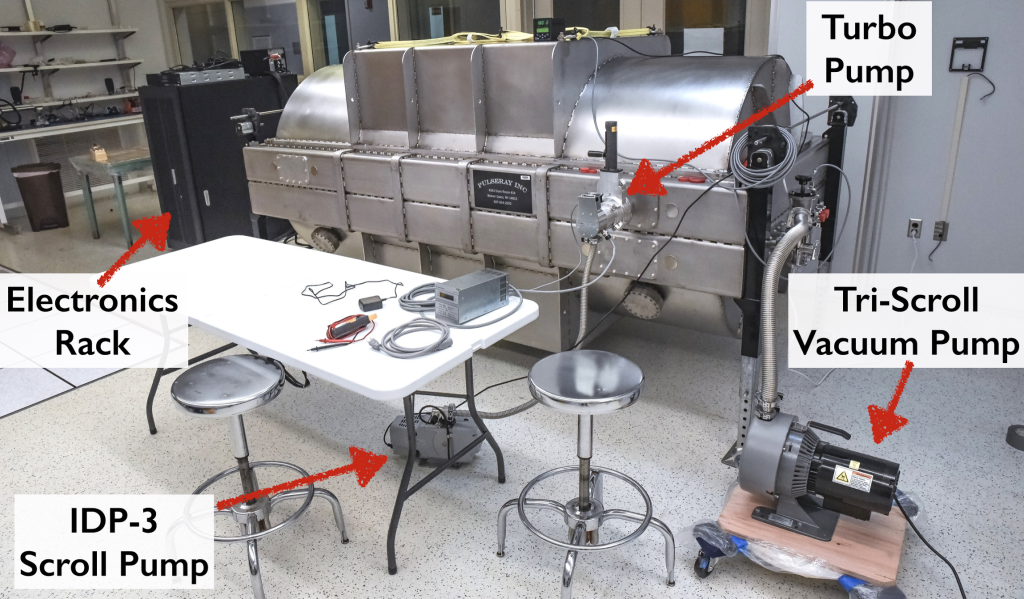

 RSS - Posts
RSS - Posts